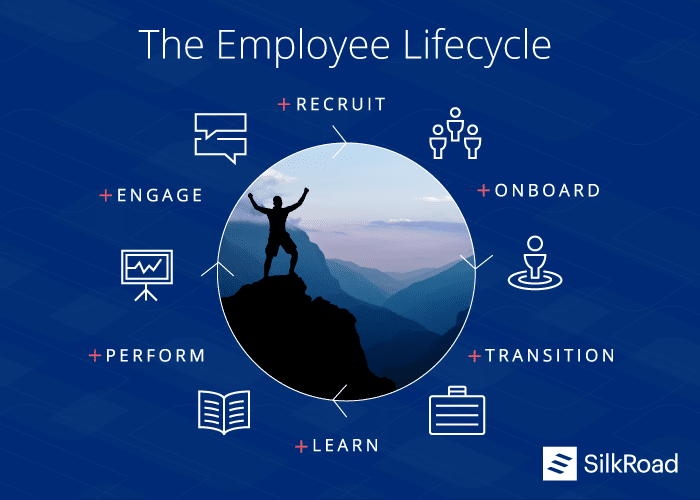
Employee resistance to change is a phenomenon that many organizations encounter during transformation efforts. Understanding why employees resist change can be essential for creating effective strategies to address their concerns. From psychological factors to the impact of organizational culture, various elements play a significant role in shaping attitudes toward new initiatives. By recognizing these dynamics, companies can better navigate the complexities of change and foster a more accepting environment.
This discussion delves into the nuances of employee resistance, offering insights into its causes and exploring practical change management strategies. Whether it’s involving employees in the process, fostering a supportive culture, or leveraging effective communication, organizations can minimize resistance and enhance the likelihood of successful change implementation.
Understanding Employee Resistance to Change
Employee resistance to change is a common phenomenon that organizations face when implementing new initiatives or alterations in their structure. Resistance often stems from various factors, including fear of the unknown, loss of control, and concerns over job security. Understanding the reasons behind this resistance is vital for leaders seeking to navigate change effectively.Psychological factors play a significant role in how employees respond to change.
Individuals may experience anxiety or stress when faced with new expectations or processes, leading to reluctance in adopting changes. Additionally, organizational culture significantly influences employee attitudes towards change. In environments where change is perceived negatively or is met with skepticism, resistance is likely to be more pronounced.
Common Causes of Employee Resistance
The reasons behind employee resistance can be multifaceted. Here are some of the common causes:
- Fear of the Unknown: Employees may worry about how changes will impact their roles and responsibilities.
- Loss of Control: Changes can make employees feel they have less say in their work environment.
- Previous Negative Experiences: Past failures related to change initiatives can create skepticism.
- Insufficient Communication: Lack of transparent communication can lead to misinformation and fear.
Change Management Strategies
To effectively manage change and mitigate resistance, organizations must implement strategic approaches. Clear and transparent communication is essential to alleviate concerns and foster acceptance among employees.Creating a framework for involving employees in the change process not only helps reduce resistance but also encourages a sense of ownership. When employees feel their input is valued, they are more likely to support the change.
Effective Change Management Strategies

Implementing change management strategies can significantly reduce resistance. Here are some that organizations can adopt:
- Open Communication: Regular updates about the change process can help dispel rumors and clarify doubts.
- Employee Involvement: Engage employees in planning and implementing changes to increase buy-in.
- Training Programs: Offer training sessions to equip employees with the skills needed for new processes.
- Feedback Mechanisms: Establish channels for employees to voice their concerns and feedback throughout the change process.
Role of Human Resources in Change Initiatives
Human Resources (HR) plays a crucial role in managing employee resistance during organizational changes. Their responsibilities encompass ensuring that employees are supported throughout the transition and that their concerns are addressed adequately.HR can also design training programs aimed at helping employees adapt effectively to changes. These programs can include workshops and skill development sessions that prepare employees for new systems or processes.
HR Responsibilities in Managing Resistance

HR’s involvement is vital for a smooth transition. Key responsibilities include:
- Training and Development: Implement programs that facilitate skill upgrades for employees.
- Support Systems: Provide counseling or support services for employees struggling with change.
- Monitoring Employee Sentiment: Use surveys to gauge employee feelings toward changes and adjust strategies accordingly.
Impact of Business Culture on Resistance
Organizational culture plays a significant role in how employees perceive and respond to change. Cultures that encourage innovation and flexibility tend to experience less resistance, while rigid cultures may struggle with change initiatives.Building a culture that embraces change involves promoting adaptability and encouraging open dialogue about the change process.
Organizational Cultures and Resistance
Different cultures influence the degree of resistance encountered:
- Hierarchical Cultures: Often resistant due to structured processes and reluctance to alter established norms.
- Collaborative Cultures: Generally more open to change, as employee engagement and teamwork are prioritized.
- Innovative Cultures: Celebrate change and often lead initiatives, resulting in minimal resistance.
Case Studies of Resistance in Different Industries
Resistance to change can vary significantly across industries. Case studies from various sectors provide insights into how employee responses can differ based on context.In the construction industry, for instance, changes in safety regulations often face pushback from workers accustomed to existing practices. On the other hand, the accounting industry has seen resistance during transitions to new payroll processes, where employees are uncertain about how these changes might affect their roles.
Industry-Specific Examples
Exploring specific examples helps illustrate resistance:
- Construction Industry: Employees may resist new safety protocols due to comfort with existing practices.
- Accounting Practices: Transitioning to automated payroll systems often meets skepticism from those used to manual processes.
- Agricultural Sector: Implementing new technologies can lead to resistance due to fear of job displacement.
Change Management in Practice
Implementing change in a business setting requires careful planning and execution. Addressing potential resistance proactively can pave the way for a successful transition.A step-by-step guide can help organizations navigate the complexities of change management.
Step-by-Step Guide for Implementing Change
Organizations should consider the following steps:
- Assess the Current Situation: Understand the existing culture and employee sentiments before implementing changes.
- Develop a Communication Plan: Tailor messages to different departments for clarity and relevance.
- Prepare Employees: Offer training and resources to help them adapt to new processes.
- Monitor Progress: Continuously evaluate employee response and make adjustments as necessary.
The Role of Leadership in Overcoming Resistance
Leadership plays a pivotal role in facilitating successful change by fostering trust and support among employees. Leaders must exhibit traits such as empathy, transparency, and decisiveness to effectively address resistance.Building relationships with employees can create a supportive environment where change is seen as an opportunity for growth.
Leadership Traits for Overcoming Resistance
Effective leaders embody certain traits that facilitate overcoming resistance:
- Empathy: Understanding employee concerns can foster trust.
- Vision: Clearly articulating the benefits of change helps employees see the bigger picture.
- Accessibility: Being available for discussions encourages open communication and reduces fear.
Measuring Resistance and Success of Change Initiatives
Measuring the level of employee resistance to change is essential for evaluating the effectiveness of change management strategies. Metrics can help organizations identify areas for improvement and adjust their approach accordingly.Continuous monitoring ensures that organizations remain agile and responsive to employee needs throughout the change process.
Metrics for Assessing Resistance
Organizations can utilize various metrics to evaluate resistance:
- Employee Surveys: Regularly conduct surveys to gauge employee sentiments regarding changes.
- Turnover Rates: Monitor changes in turnover rates as an indicator of resistance.
- Performance Metrics: Assess productivity levels before and after changes to measure impact.
Employee Engagement and Change Adoption
Increasing employee engagement during change initiatives is crucial for successful adoption. Strategies that promote involvement can significantly enhance the likelihood of acceptance.Recognizing and rewarding employees who actively support change can foster a positive environment and encourage others to participate.
Strategies for Increasing Engagement
To boost engagement, organizations can implement several strategies:
- Involvement Opportunities: Create committees that allow employees to contribute to the change process.
- Recognition Programs: Acknowledge and reward employees who embrace and promote change.
- Transparent Communication: Keep employees informed and involved throughout the change journey.
Future Trends in Change Management
Emerging trends may influence how employee resistance is managed in the future. Advancements in technology and the rise of social media are reshaping the landscape of change management.Organizations must stay abreast of these trends to effectively address resistance and facilitate smooth transitions.
Emerging Trends Influencing Resistance
Key trends to watch include:
- Technology Adoption: As technology evolves, employees may resist changes that require new skill sets.
- Social Media Influence: Platforms can shape employee perceptions and attitudes toward change initiatives.
- Remote Work Dynamics: Changes in work environments may lead to different resistance patterns as employees adapt to new norms.
Final Wrap-Up
In summary, addressing employee resistance to change is a multifaceted challenge that requires a thoughtful approach. By understanding the underlying causes and implementing effective strategies, businesses can transform resistance into acceptance, leading to smoother transitions and better outcomes. Ultimately, cultivating a workplace culture that embraces change empowers employees and positions the organization for ongoing success in an ever-evolving landscape.
FAQ Insights
What is employee resistance to change?
Employee resistance to change refers to the reluctance of employees to adapt to alterations within their workplace, often due to fear, uncertainty, or a lack of understanding.
What are common causes of resistance?
Common causes include fear of the unknown, perceived threats to job security, lack of trust in leadership, and inadequate communication about the changes.
How can organizations reduce resistance?
Organizations can reduce resistance by involving employees in the change process, providing clear communication, and offering support through training and resources.
What role does leadership play in managing resistance?
Leadership plays a crucial role by modeling positive attitudes toward change, building trust, and actively listening to employee concerns.
How is resistance measured?
Resistance can be measured through surveys, feedback mechanisms, and observing changes in employee behavior and engagement levels during the implementation process.





